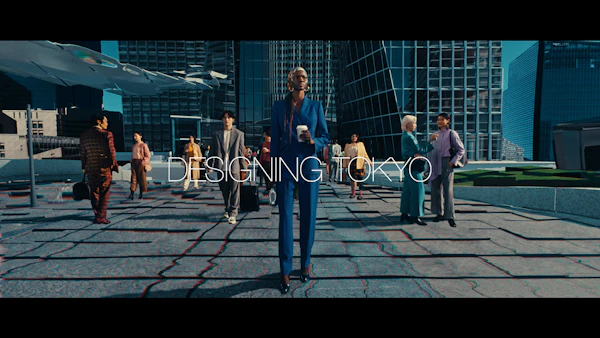Toranomon Hills Station Tower
虎ノ門ヒルズ ステーションタワー
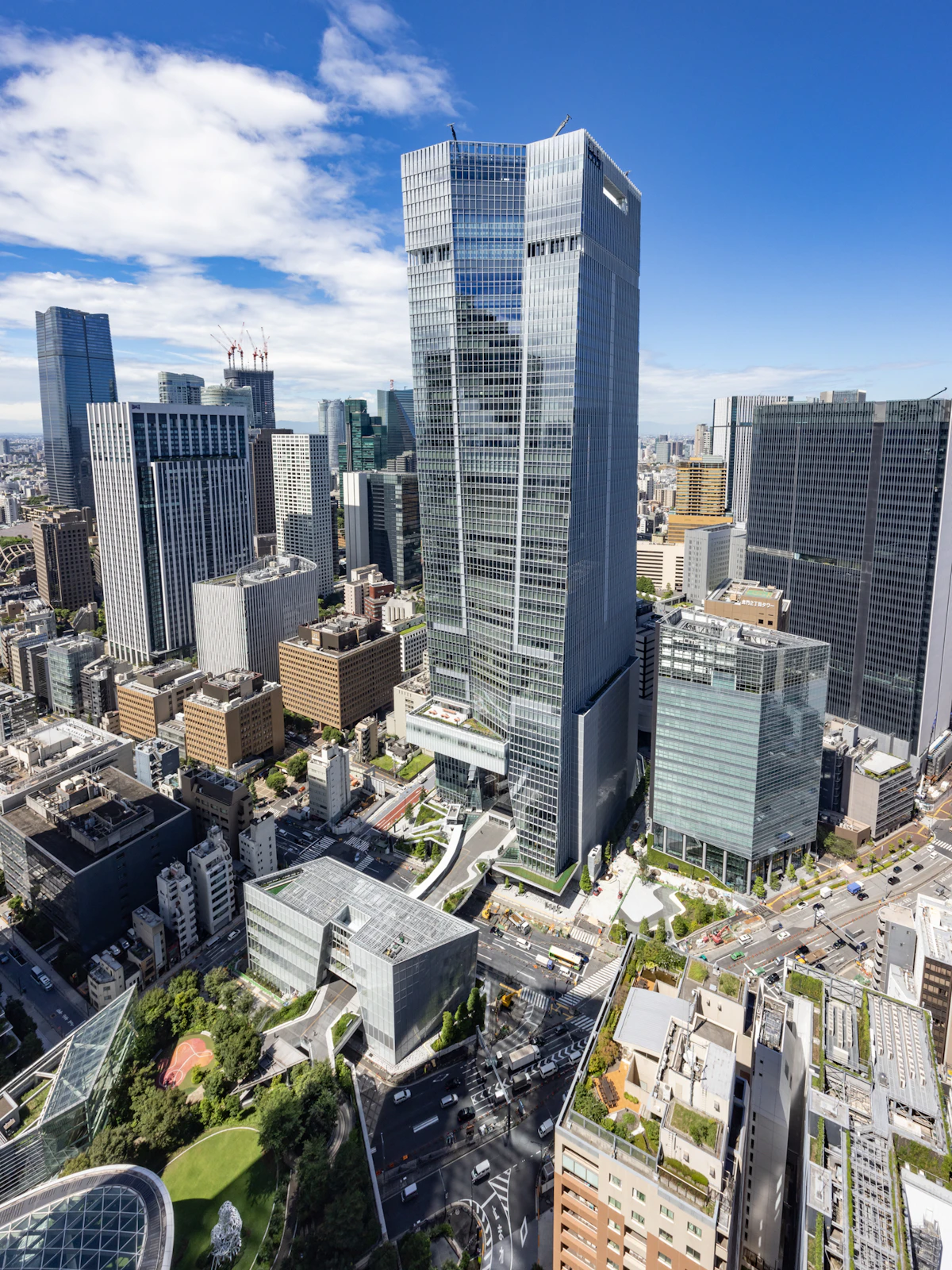
History開発経緯
Toranomon 1&2-chome District Urban Redevelopment established Preparations Committee in 2016, noticed Urban Redevelopment Project Plan in 2018, established Urban Redevelopment Association in November, started construction at 2019, and completed in July 2023. Mori Building is a leading participant of the Association.
Timeline
Feb. 2016 | Establishment of Toranomon 1&2-chome District Urban Redevelopment Preparations Committee |
Mar. 2018 | Notice of Toranomon 1&2-chome District Category 1 Urban Redevelopment Project plan |
Nov. 2018 | Establishment of Toranomon 1&2-chome District Urban Redevelopment Association |
Mar. 2019 | Approval of rights conversion plan |
Nov. 2019 | Start of construction |
Jul. 2023 | Construction completed |
Oct. 2023 | Opened |
Project Overview 計画概要
Toranomon Hills Station Tower, located in the center of Toranomon Hills expanding and evolving as a new international hub and global business center, is an integrated urban redevelopment project with Toranomon Hills Station on the Tokyo Metro Hibiya Line. The project is consisted of the main Toranomon Hills Station Tower (A-1 district), Glass Rock (A-2 district) and Toranomon Hills Edomizaka Terrace (A-3 district) .
Toranomon Hills Station Tower (main tower) is a multi-purpose 266-meter high tower with 49 floors above ground and 4 floors underground. The tower includes global-level office with standard floors of about 3,400m², retail facilities integrated with the station plaza and a world-class hotel. The tower's top-most level is home to TOKYO NODE, an interactive communication facility consisting of halls, galleries, pool, restaurants, and other facilities fully capable of creating new values, ideas and business transcending domains, aimed at sharing creativity with the world.
Toranomon Hills evolves into a "communication hub" that attracts highly experienced and influential people from throughout the world for business creation and innovation that will be shared globally.
Starting with Mori Tower, completed in 2014 through integral development with Loop Road No.2, Toranomon Hills has expanded and evolved in a rapid speed with the completion of Business Tower (2020), Residential Tower (2022). The Toranomon Hills has been expanded to 7.5ha and total floor space of 800,000m² and Station Tower (2023). The area is steadily evolving as a mixed‐use complex integrated with urban infrastructures such as road and subway, becoming a new international hub and global business center with a scale and an impact comparable to that of Mori Building's epoch-making Roppongi Hills.
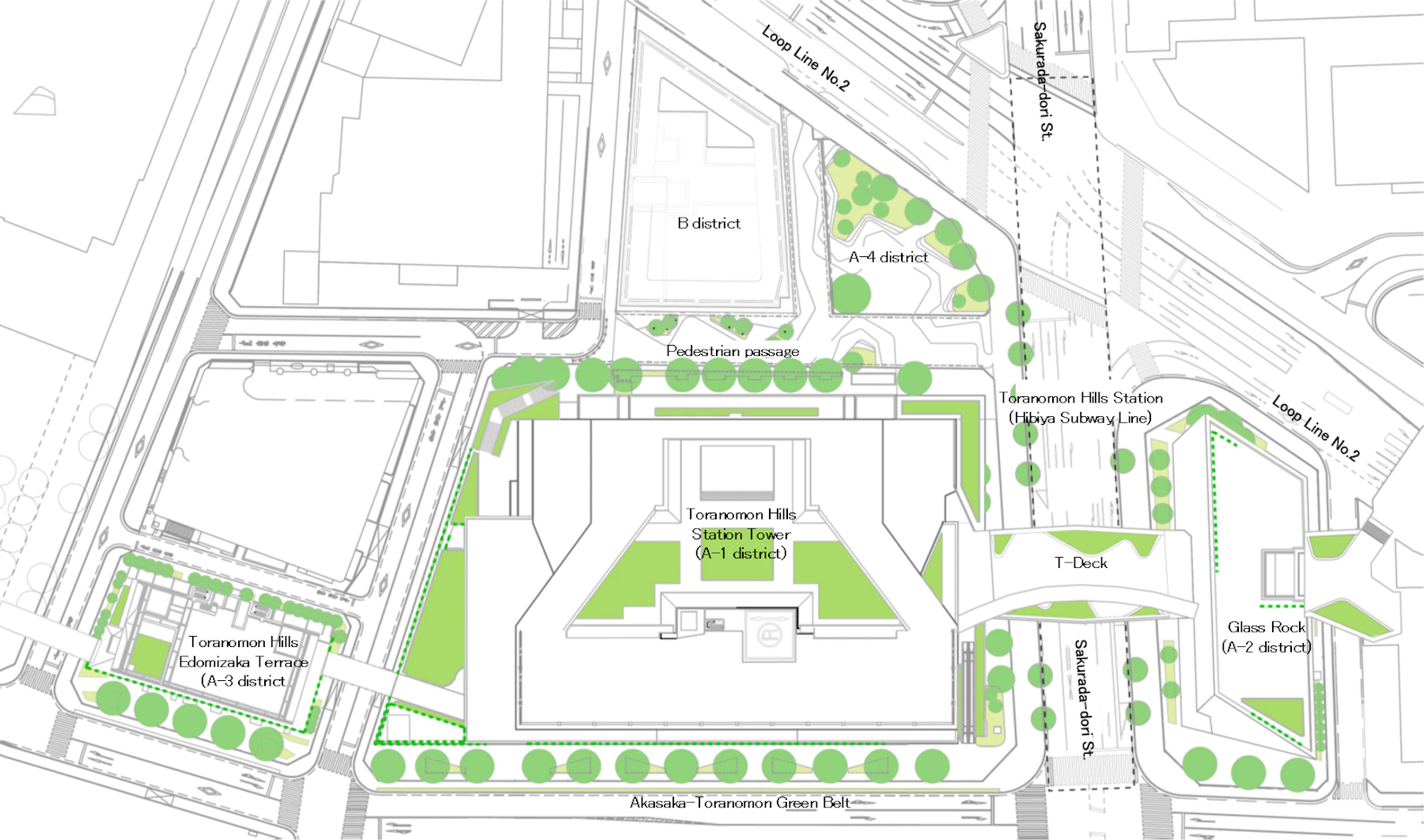
Site Plan
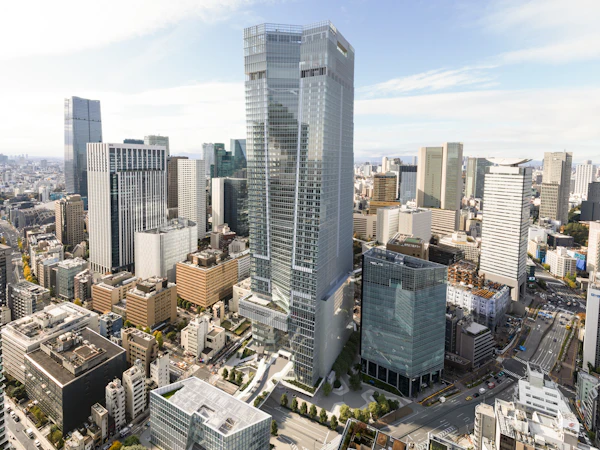
Toranomon Hills Station Tower (A-1 district)
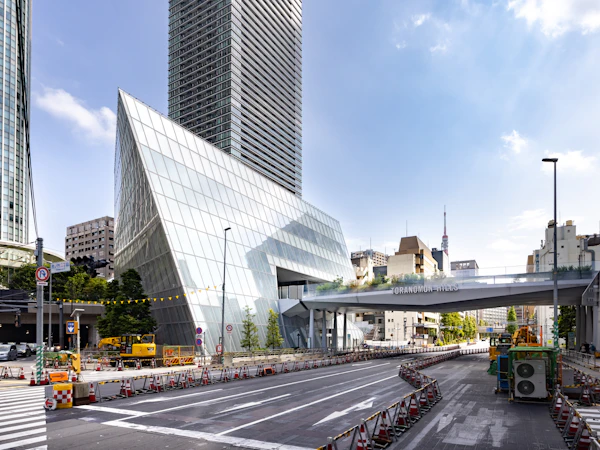
Glass Rock (A-2 district)

Toranomon Hills Edomizaka Terrace (A-3 district)
Combined Two-district Development and Multilayered Transport Network Dramatically Improve Traffic Flow in and through Entire Surrounding Area
Toranomon Hills Station Tower developed in close conjunction with Toranomon Hills Station on the Tokyo Metro Hibiya Line to create a refreshingly open station plaza as well as a large (20m-wide) and highly functional pedestrian T-Deck running above Sakurada-dori Avenue (National Route 1) and connecting to Toranomon Hills Oval Square.
Constructing such a large-scale pedestrian deck across the arterial road was made possible by establishing the redevelopment area's east and west blocks as one across Sakurada-dori Avenue. The strategy realized an integrated urban development, rather than being divided into two blocks, while maintaining its function as a key arterial road.
By expanding the local multilevel transportation network on the ground, underground and the deck-level, the Station Tower will greatly enhance the Toranomon Hills as a transportation node and will enliven the entire area by significantly improving pedestrian flows.
20m-wide Pedestrian T-Deck Functions as Another Square
The elevated walkway deck nicknamed T-Deck, which passes through the Station Tower, is the main route for east-west pedestrian traffic, crossing districts and arterial road. It realizes safe urban spaces by separating pedestrians and vehicles in the area as well.
T‐Deck ensures barrier-free pedestrian flows between the facilities of Toranomon Hills. It also provides quick, direct access to Toranomon Station on the Tokyo Metro Ginza Line, and Toranomon Hills Station on the Tokyo Metro Hibiya Line as well as a bus terminal served by airport limousine buses and BRT buses connecting Tokyo's downtown and waterfront areas.
By coordinating with Mori Tower's Oval Square, T‐Deck also contributes to the area's lively scene by functioning like another square linking people in Toranomon Hills.
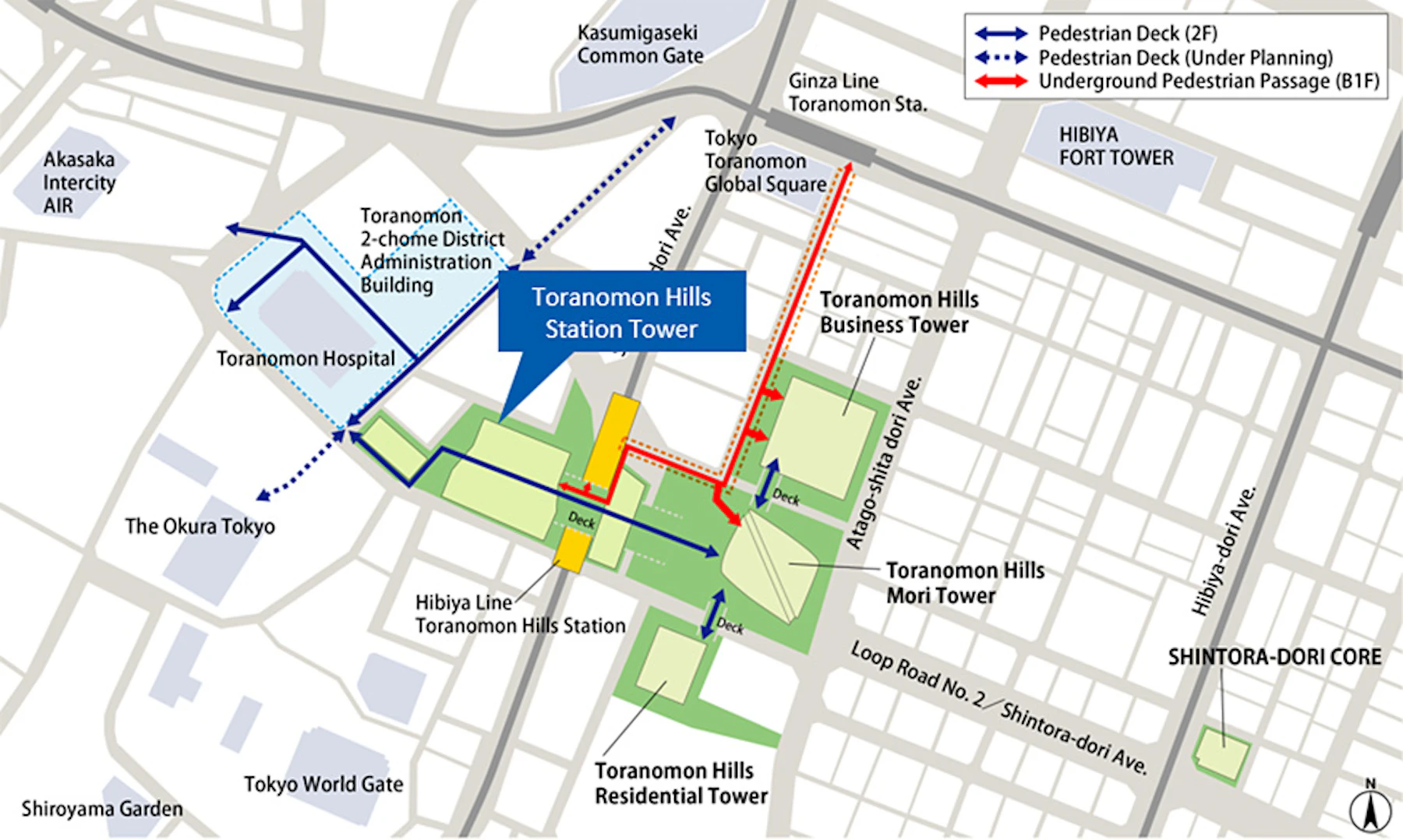
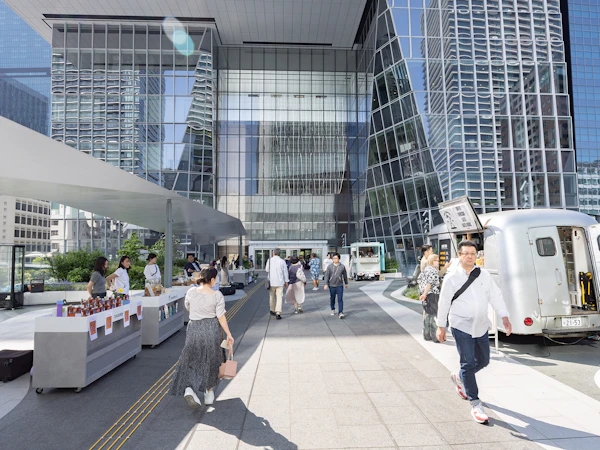
T-Deck above the Sakurada-dori WalkwayAvenue
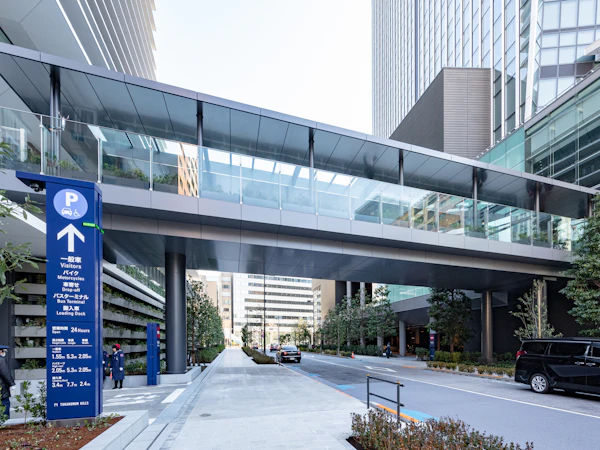
Pedestrian Deck
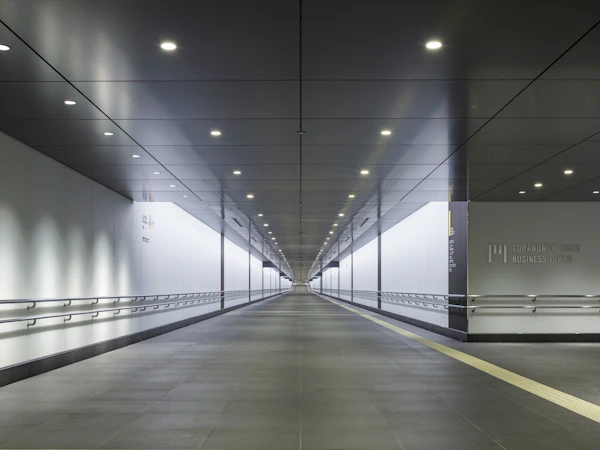
Underground Pedestrian
Open and Lively "Station Atrium" Created through Integrated Development of Station and Surrounding Area
One of the signature features of the Toranomon Hills Station Tower is its "Station Atrium" plaza (2,000m²), created through the integrated development of Toranomon Hills Station on the Tokyo Metro Hibiya Line and the Toranomon Hills. We are promoting the development in collaboration with the Urban Renaissance Agency and Tokyo Metro Co., Ltd. The Station Atrium is a three-story atrium-style vaulted space combining coordinated and complementary urban and transportation functions. It is richly illuminated with natural light as a bright and open all-weather area that makes people forget they are actually below ground level. Such a rich open space has never existed in a Japanese subway station.
The Station Atrium's direct connections between the station plaza and nearby facilities for events and shopping keep the space bustling with a steady flow of people from morning till night. Dynamic image production communicated via large digital signage further enhances the plaza's atmosphere as a stimulating place where people can find new information everyday.
Located in the heart of Toranomon Hills, the Station Atrium—besides serving as a transportation node—is a lively and stimulating space that functions like the face of the entire complex as its welcomes people from all over the world.
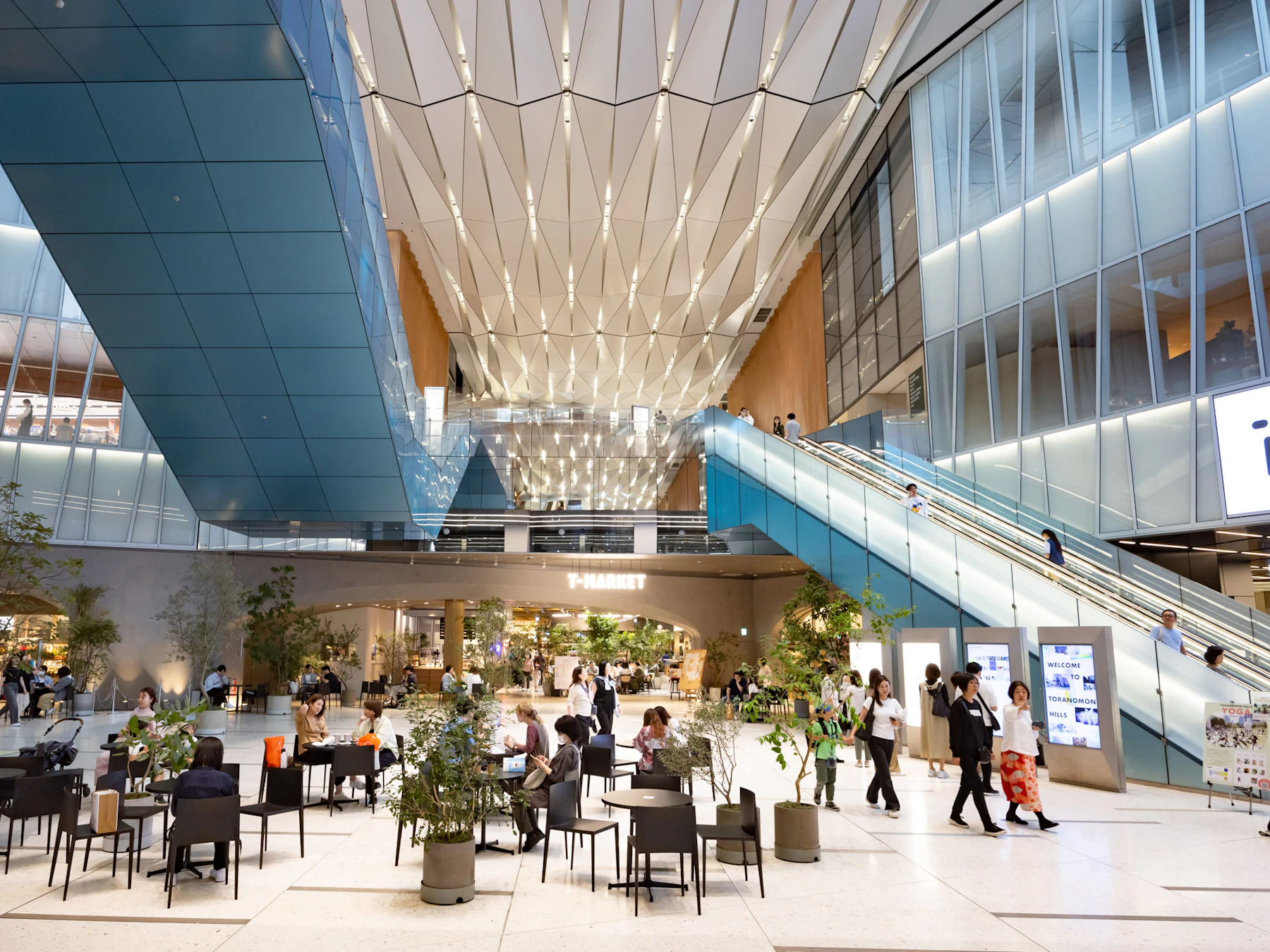
Station Atrium
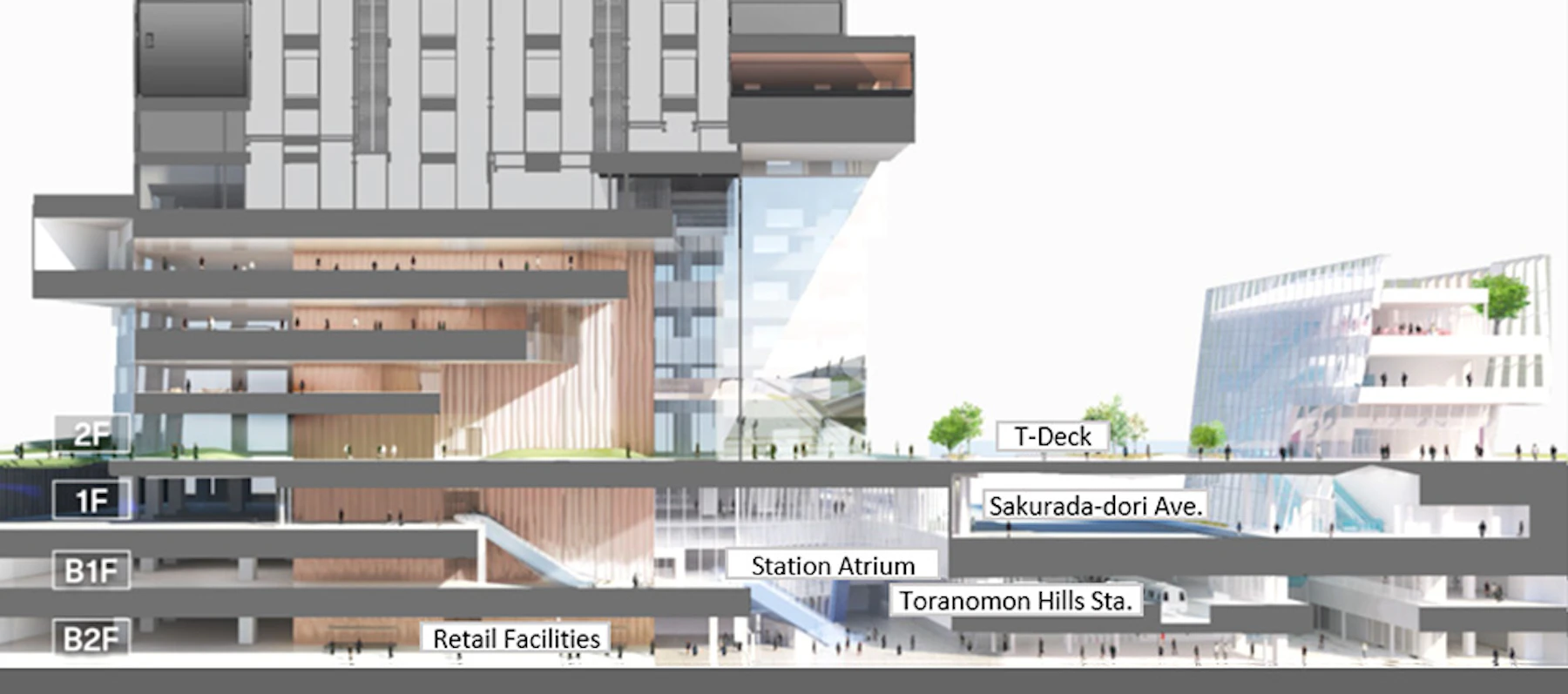
Lower part cross-section plan
Facility Overview施設概要
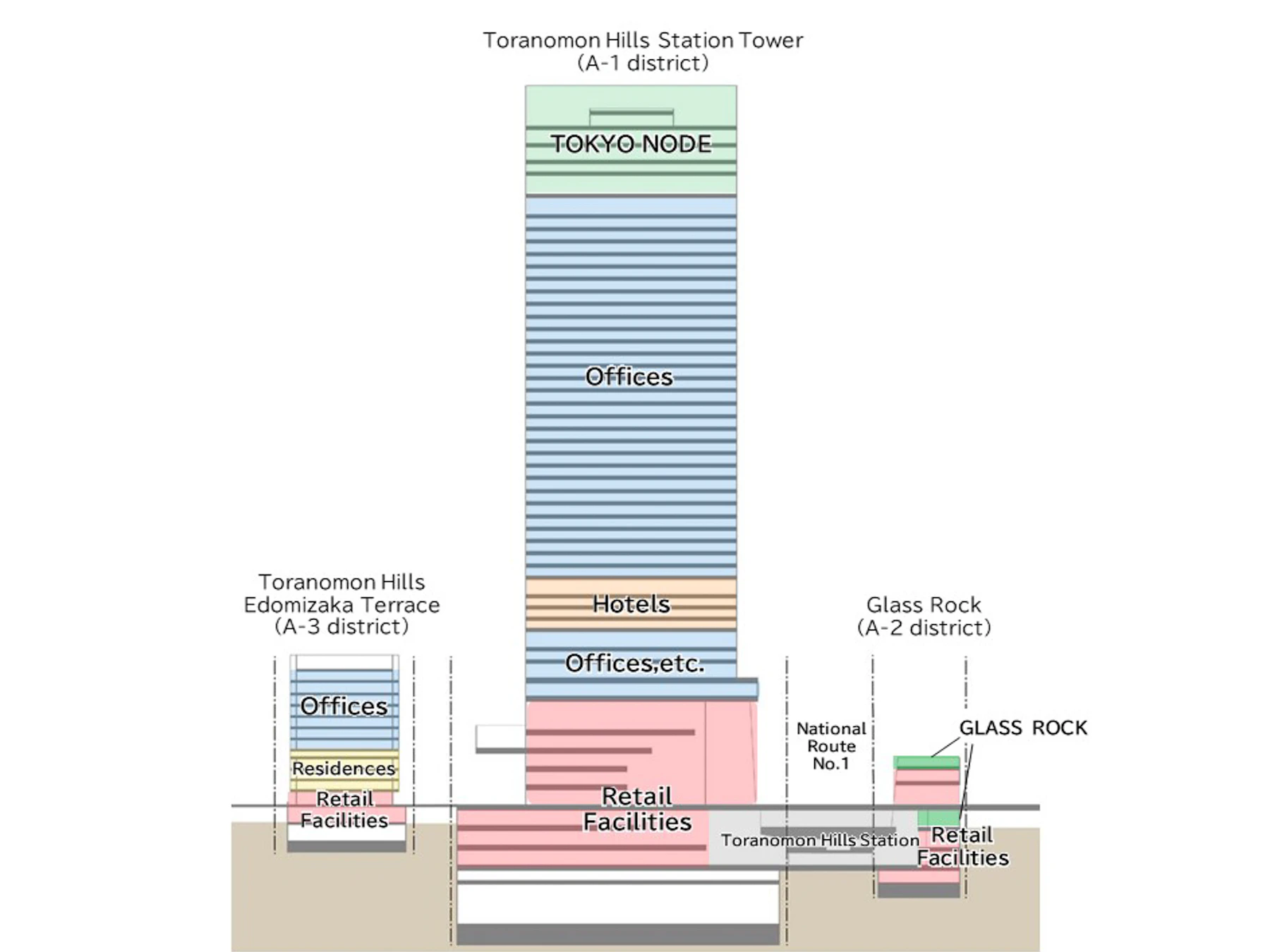
Cross Section Plan
Interactive Communication Facility TOKYO NODE
One of the key features of Toranomon Hills Station Tower is TOKYO NODE, a 10,000m² interactive communication facility on the top floors (45th to 49th floors, and partially on the 8th). The facility is designed to disseminate new experiences, values, content and information created by enhancing collaborations that transcend domains such as business, art, entertainment, technology, and fashion.
The main hall and three galleries can be used individually or integrated as one contiguous venue. In addition, sky garden, pool, and restaurants on the rooftop further enhance the facility's capacity as a highly functional and distinctive space for communication and knowledge-sharing, wholly unlike traditional conference and banquet facilities.
Furthermore, TOKYO NODE can be used in conjunction with other event spaces and assets in the entire Toranomon Hills area, including Toranomon Hills Forum, Andaz Tokyo and/or Shintora-dori Avenue, serving as an information dissemination platform for the entire Toranomon Hills area, allowing Toranomon Hills to evolve into a "communication hub" that attracts highly experienced and influential people from throughout the world for business creation and innovation that will be shared globally.
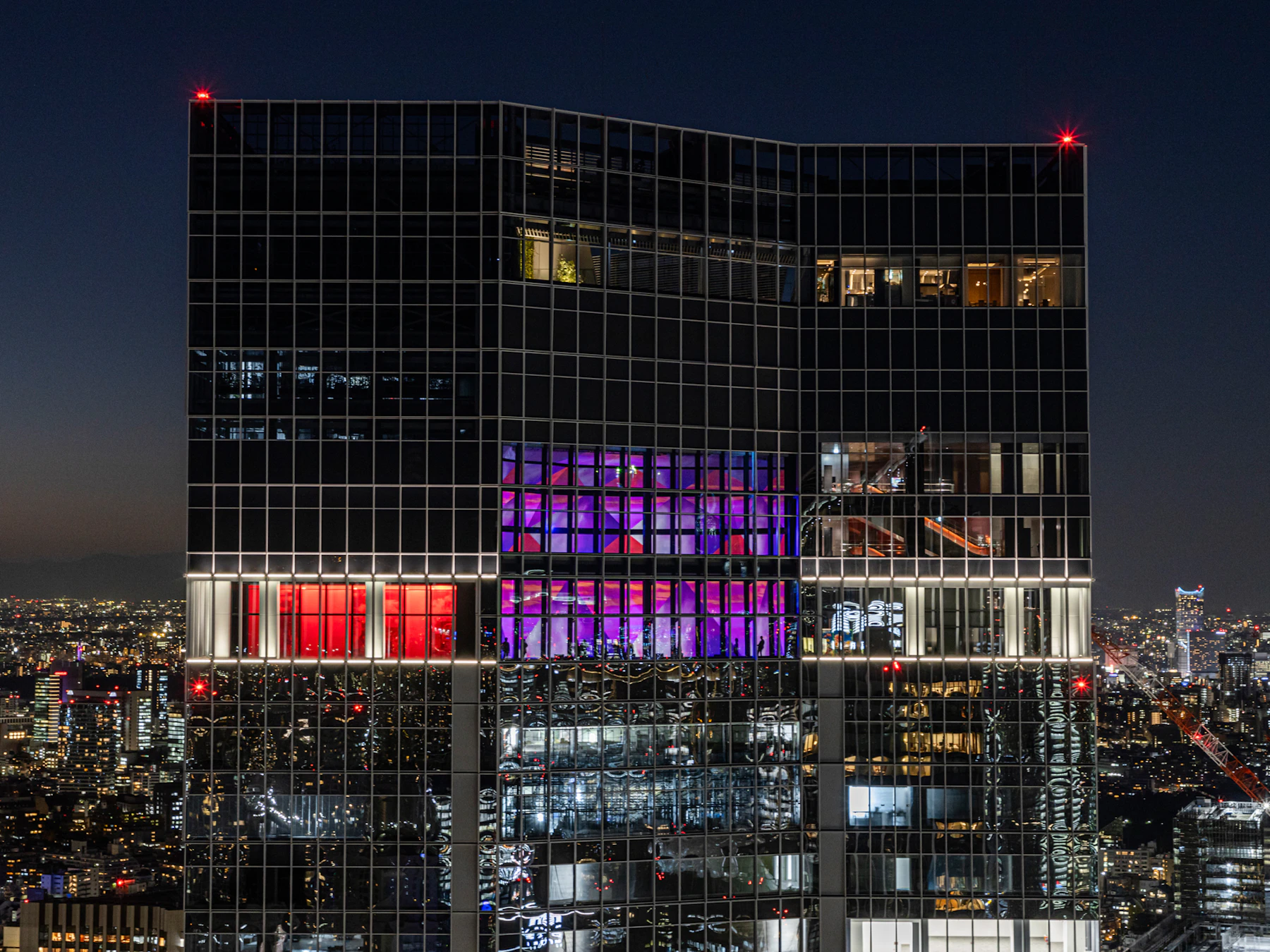
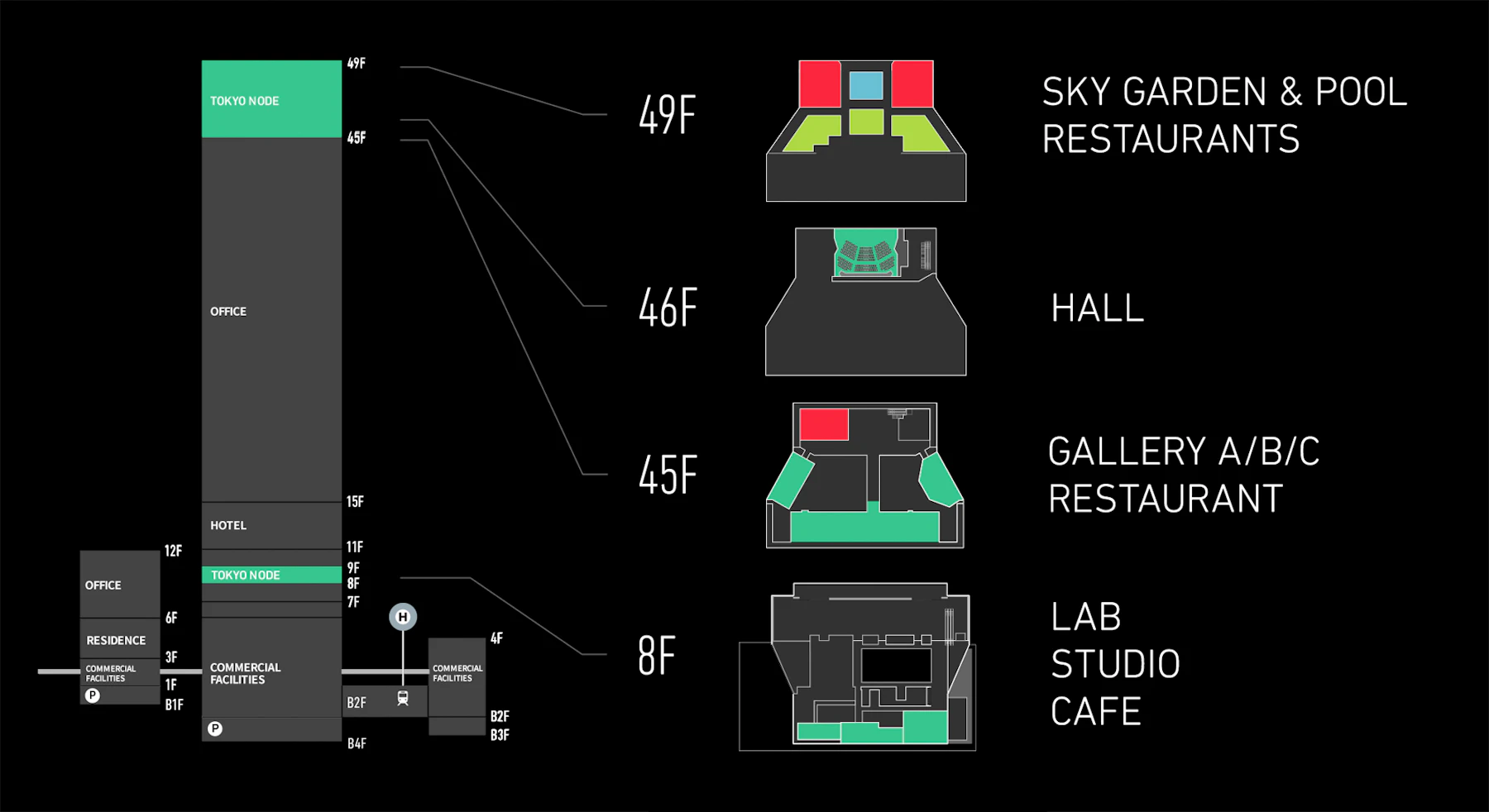
Site plan
Main Hall; TOKYO NODE HALL (46th floor)
The centerpiece of TOKYO NODE is TOKYO NODE HALL, which has a maximum ceiling height of 11.6 meters, seating capacity of 338 and a hall area of 460m². It is an ideal venue for stage performances and presentations in front of a magnificent view overlooking the Imperial Palace and much of Tokyo.
Designed with the cross reality (XR) era in mind, the hall adapts easily to hybrid formats that combine real staging and virtual delivery for valued-added experiences. It also offers a highly flexible venue layout and related functions, including a lift capable of handling vehicles and other large and heavy exhibits, and movable steps to suit a wide range of genre and layout needs such as business/innovation presentations, musical performances, gala dinner parties and much more.
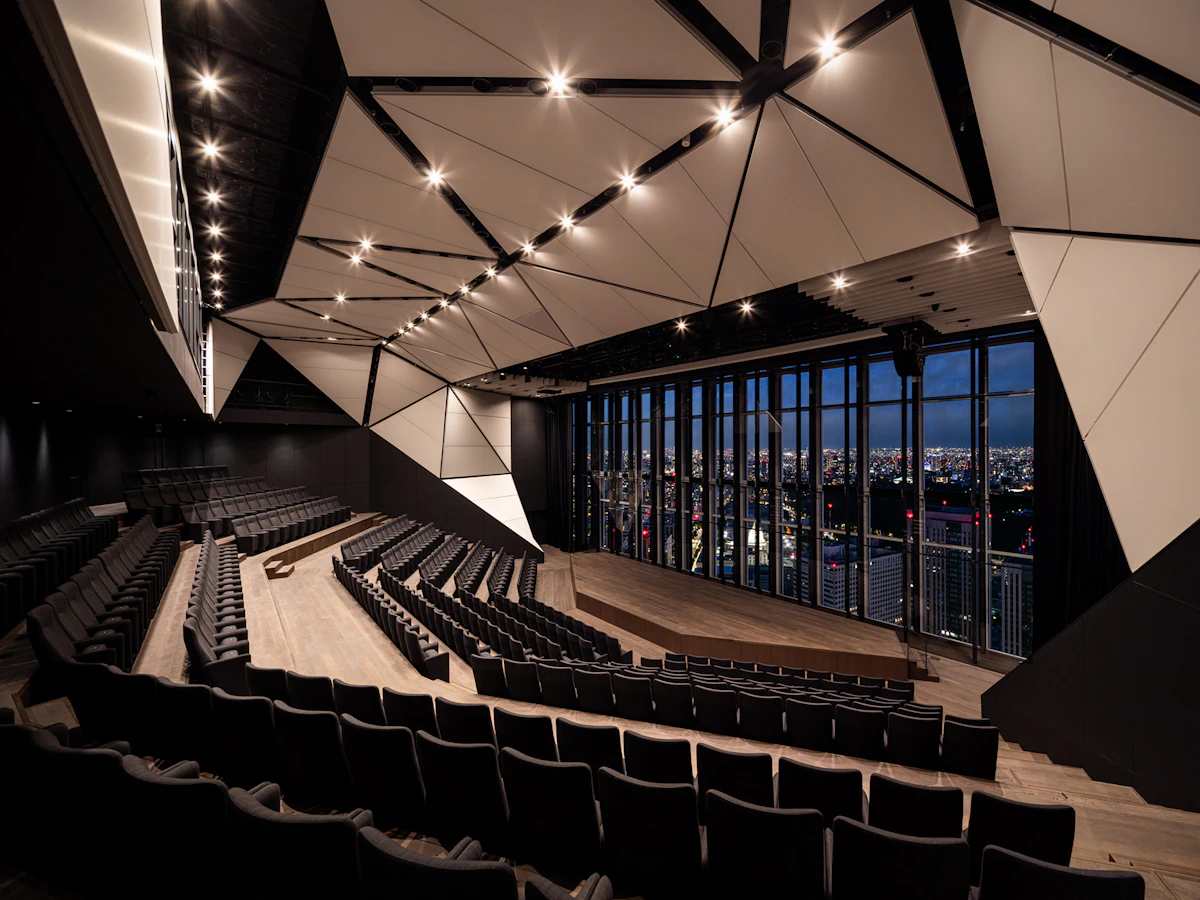
Gallery; TOKYO NODE GALLERY (45th floor)
Three distinctive galleries is located on the 45th floor: TOKYO NODE GALLERY A features a dome-shaped ceiling to create an immersive 360-degree space measuring 240m², a maximum ceiling height of 15 meters; TOKYO NODE GALLERY B is an impressively expansive space measuring 1,020m² and with a ceiling of 5.5 meters; and TOKYO NODE GALLERY C, measuring 220m², also has a high ceiling of 12 meters.
These multifunctional galleries, each designed to accommodate wide-ranging events from business to entertainment, also can be connected together to create a much larger space for special exhibitions with unique storylines, such as interactive exhibits that fully immerse visitors in the organizer's art or brand. Furthermore, the entire floor can be configured as its own world by additionally incorporating the Arrival Hall, which serves as open-air lobby integrating the three halls, and a restaurant where all-day dining can be enjoyed.
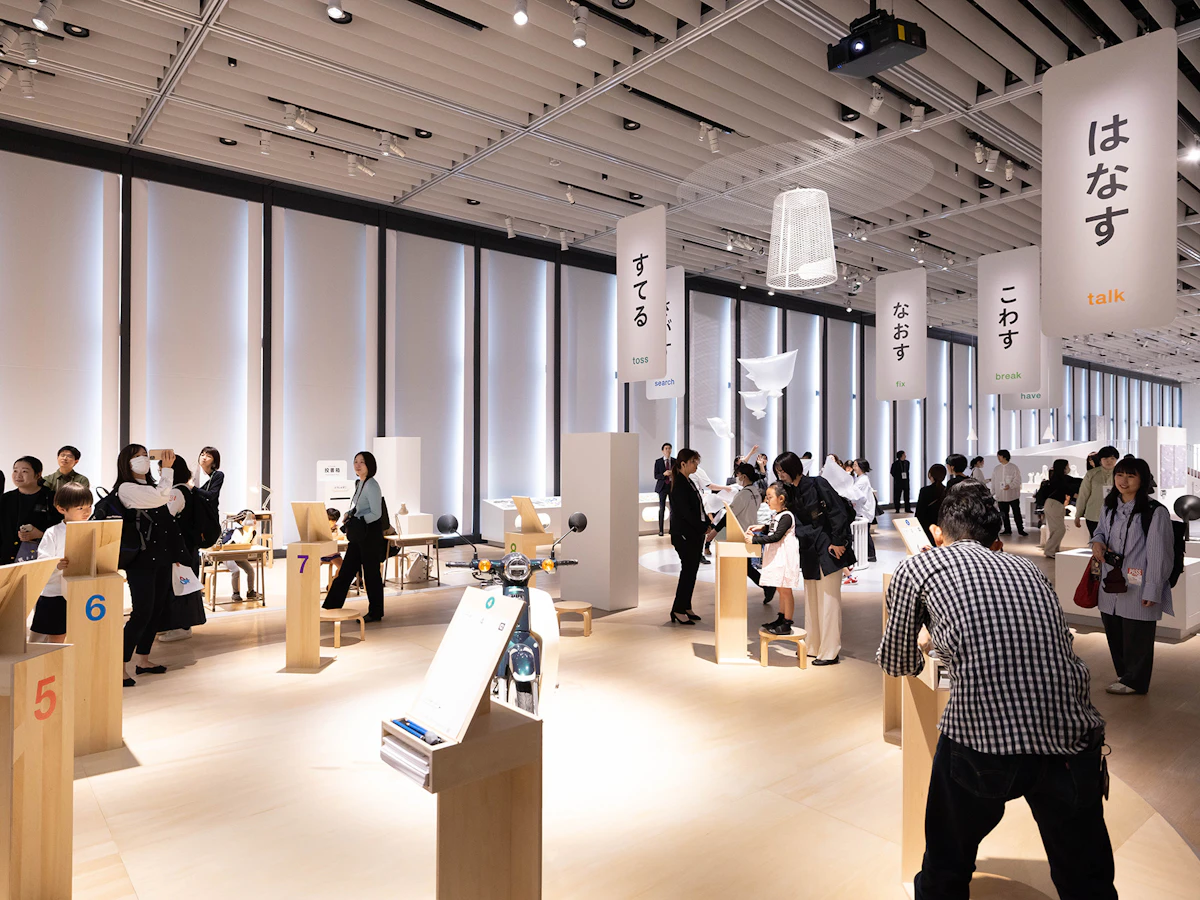
Sky garden, infinity pool, restaurants; TOKYO NODE SKY GARDEN & POOL (49th floor)
The rooftop, 250 meters above ground, is a symbolic location with a large, open-air sky garden and infinity pool that can be integrated with TOKYO NODE's halls, galleries and restaurants for fashion shows, garden parties and other memorable events. This unique environment, featuring one of the highest gardens and pools in Tokyo, provides visitors with unforgettable experiences.
Two restaurants are located on the top 49th floor: a concept restaurant newly launched by Kei Kobayashi, the first Asian chef to win three Michelin French stars in France, and a French gastronomy created by Keita Kitamura, formerly a chef at a Michelin-starred restaurant in Paris. Cuisine prepared by some of the world's best chefs will further enhance information-dissemination performances at TOKYO NODE.
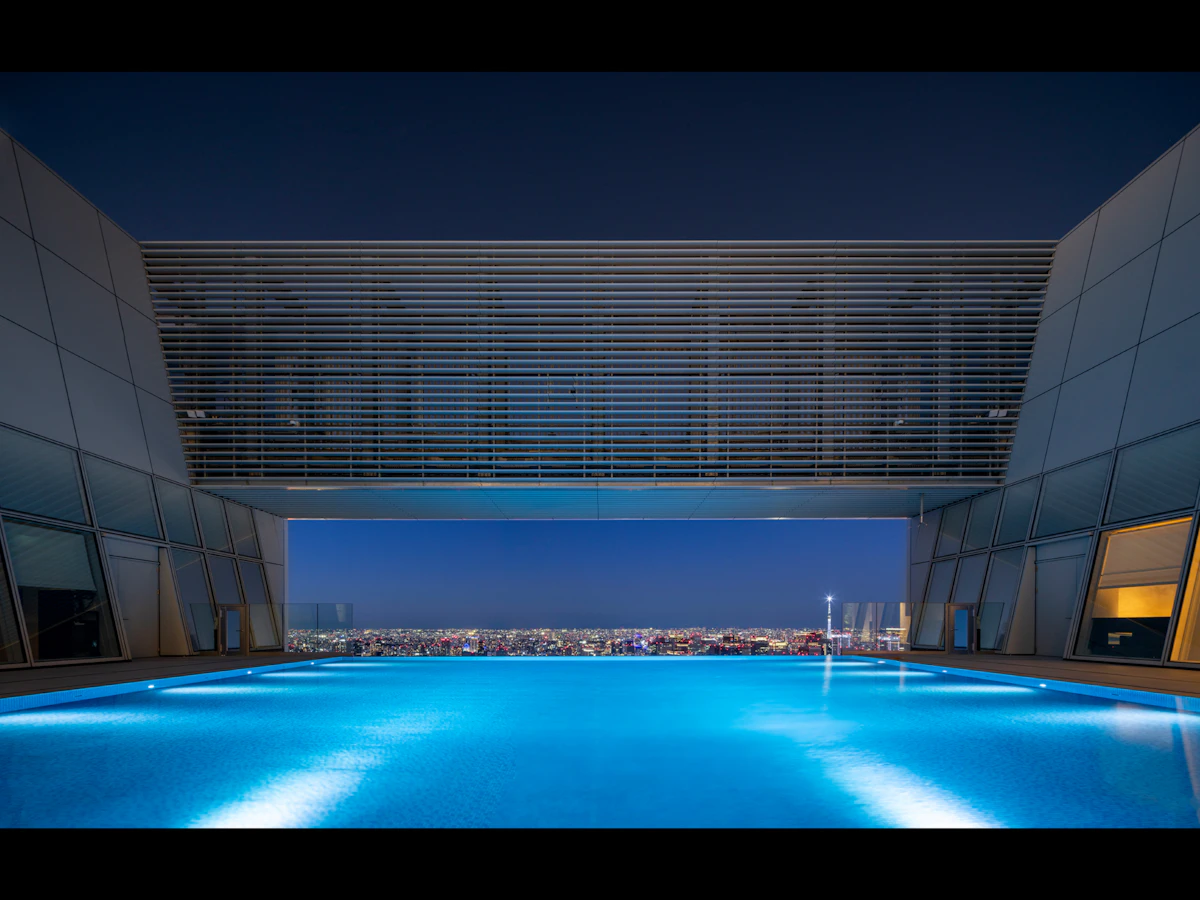
Lab; TOKYO NODE LAB (8th floor)
TOKYO NODE LAB, which includes a state-of-the-art volumetric studio for XR live distribution, is a space where creators collaborate. A joint project to build a new creative ecosystem is underway, which will launch new urban experiences and content and widely disseminate to the world.
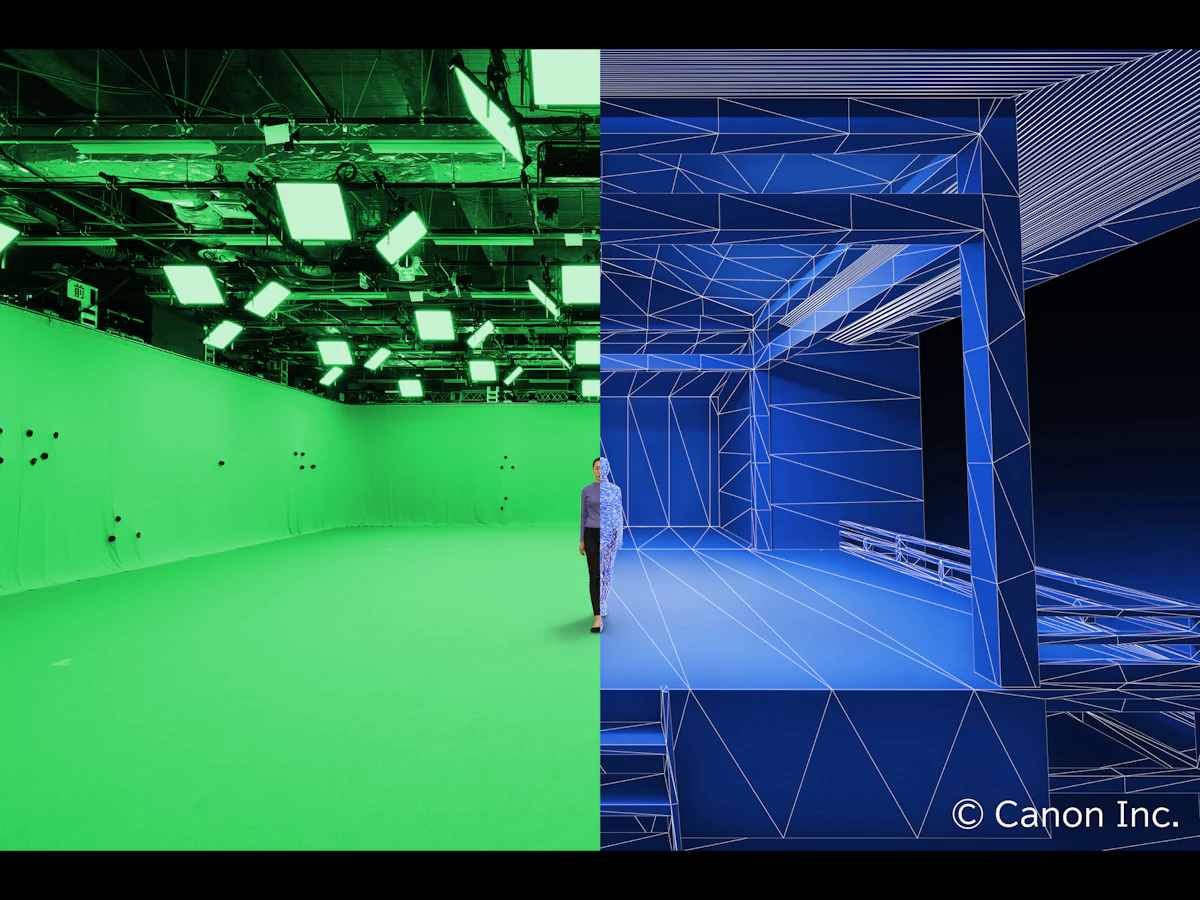
TOKYO NODE Logo design
As implied by its name, TOKYO NODE will be a focal point for connecting the world and Japan, diverse people, and transcending the boundaries of business, art, science and entertainment. It will realize innovative creations that combine technology, ideas, and passion, and share them to the world, ultimately to enhance Tokyo's global magnetism.
The logo design by Yugo Nakamura is a motion logo that expresses the node continuing to move toward the future. The flowing logo expresses that TOKYO NODE will become a nodal point that enhances the communication hub Toranomon Hills, in response to society and the times continues to evolve, and move forward as an engine driving innovation and creation.
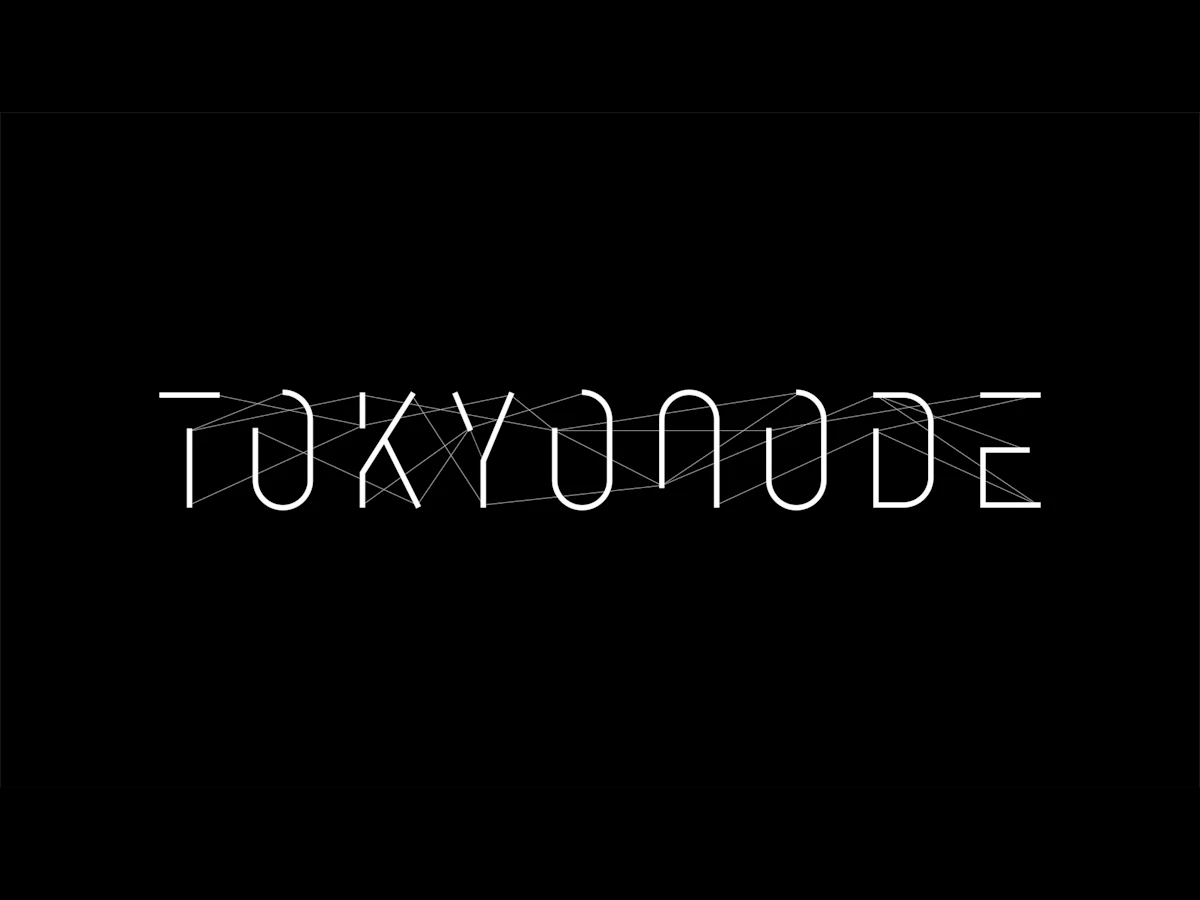
- Yugo Nakamura
"TOKYO NODE will create new connections between cultures and businesses worldwide. It will gradually change and expand through the steady inclusion of various new stimuli. I created the identity logo to express not only the facility's latest interactive communication, but also its dynamic nature based on connections."
Profile
Web designer, interface designer and visual image director Yugo was born in Nara Prefecture, Japan in 1970 and graduated from the University of Tokyo's Graduate School of Engineering. He became a professor at Tama Art University and has been involved in web and interface design since 1998, and he established the design studio "tha ltd." in 2004.
Yugo has provided art direction, both cross-sectional and vertical, as well as design and programming for numerous websites and videos. His major works include a series of web directions for UNIQLO, UI design for the KDDI INFOBAR smartphone, and direction for the NHK educational program "Design Ah!"
His major awards include the Cannes Lions International Advertising Award Grand Prix, the Tokyo Interactive Ad Award Grand Prix, the TDC Award Grand Prix, the Mainichi Design Award, and the Minister of Education, Culture, Sports, Science and Technology's Art Encouragement Prize for Upcoming Designers.
New Hub for Addressing Issues Through Cross-sector Collaboration: Glass Rock Social Action Community
Many issues in society are too difficult for any single organization or sector to solve and thus require cross-sector collaboration and co-creation among corporations, government agencies, NPOs, NGOs and individuals.
To this end, the new Glass Rock Social Action Community will serve as a members-only hub aimed at solving societal issues through cross-sector collaboration and co-creation. Spanning some 890 square meters on two floors (B1 and 4th), it will provide a platform for networking supported by expert facilitators. It will also offer programs and events for practical learning and dialogue. In addition, events and gallery exhibitions will help broaden perspectives on targeted issues. Through these platforms and mechanisms, the hub will facilitate cross-sector collaboration and co-creation for innovative solutions that support a more sustainable world.
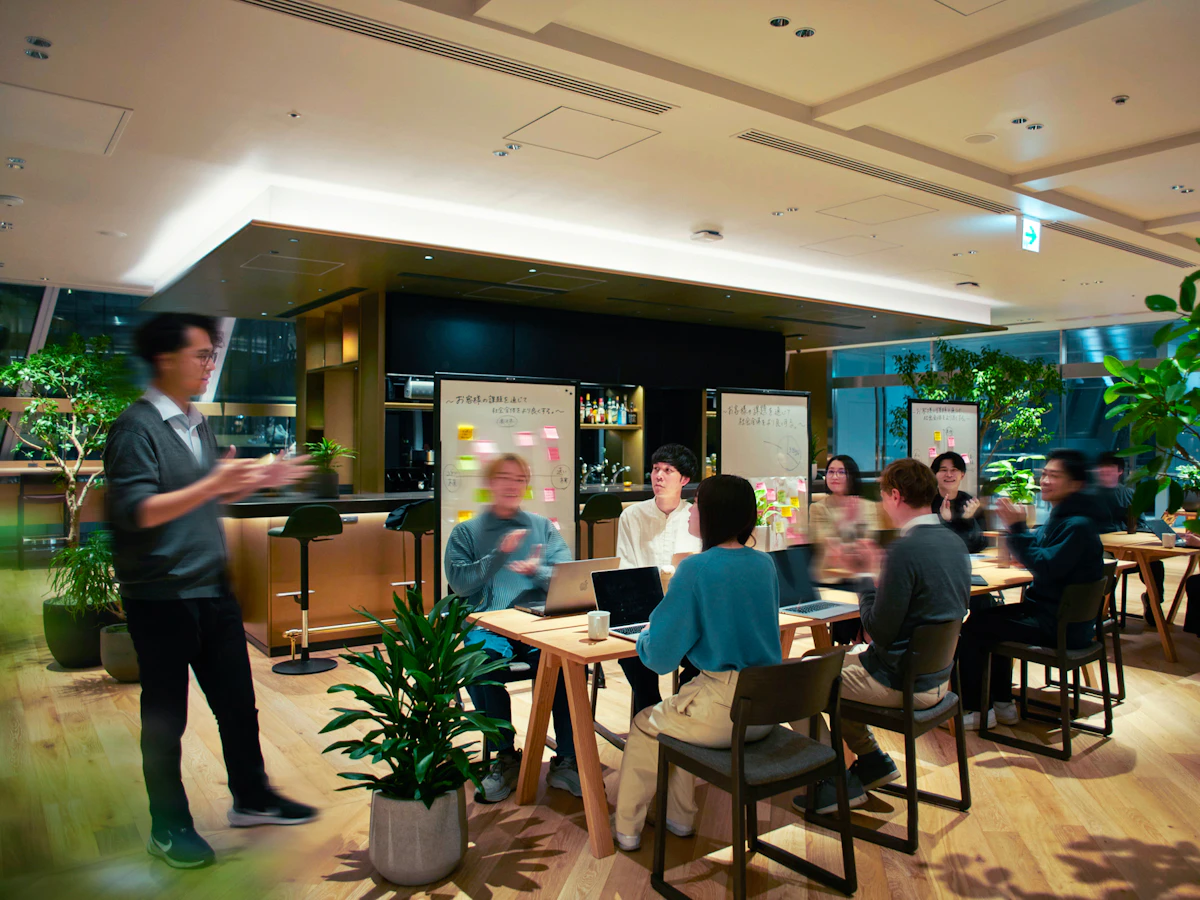
Partners Lounge (4th floor)
This is where the Community's 100 corporate partners (about 300 people) and over 30 co-creation partners, including NPOs, companies, quasi-governmental organizations and academic institutions, will gather to interact and explore co-creation opportunities on a daily basis. The lounge will also be available for seminars and workshops, including the "Take Off Program" and "X Roadmaps" for corporate members. In addition, the TANA library in a corner of the lounge will help to connect people, ideas and action.
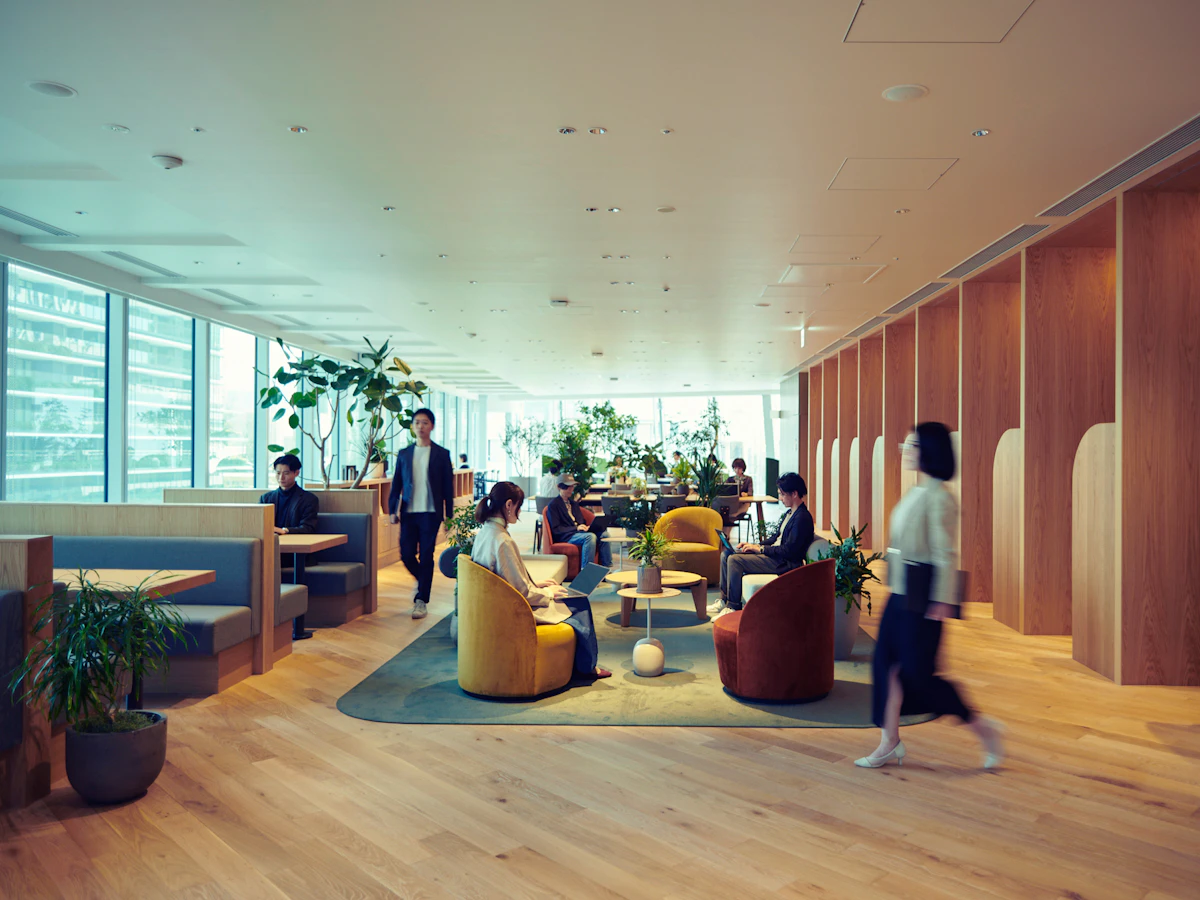
Members Lounge (B1F)
This lounge will be open to all members for co-creation. People from diverse sectors will be able to interact to consider new initiatives and opportunities, and the facility's Community Manager will help to facilitate communication. There will even be a central kitchen to encourage additional interaction. The layout can be transformed into a theater-style setting for seminars and study groups of up to 70 people. Also, a soundproof studio will be available for audio recordings of people talking about solutions to key issues in society.
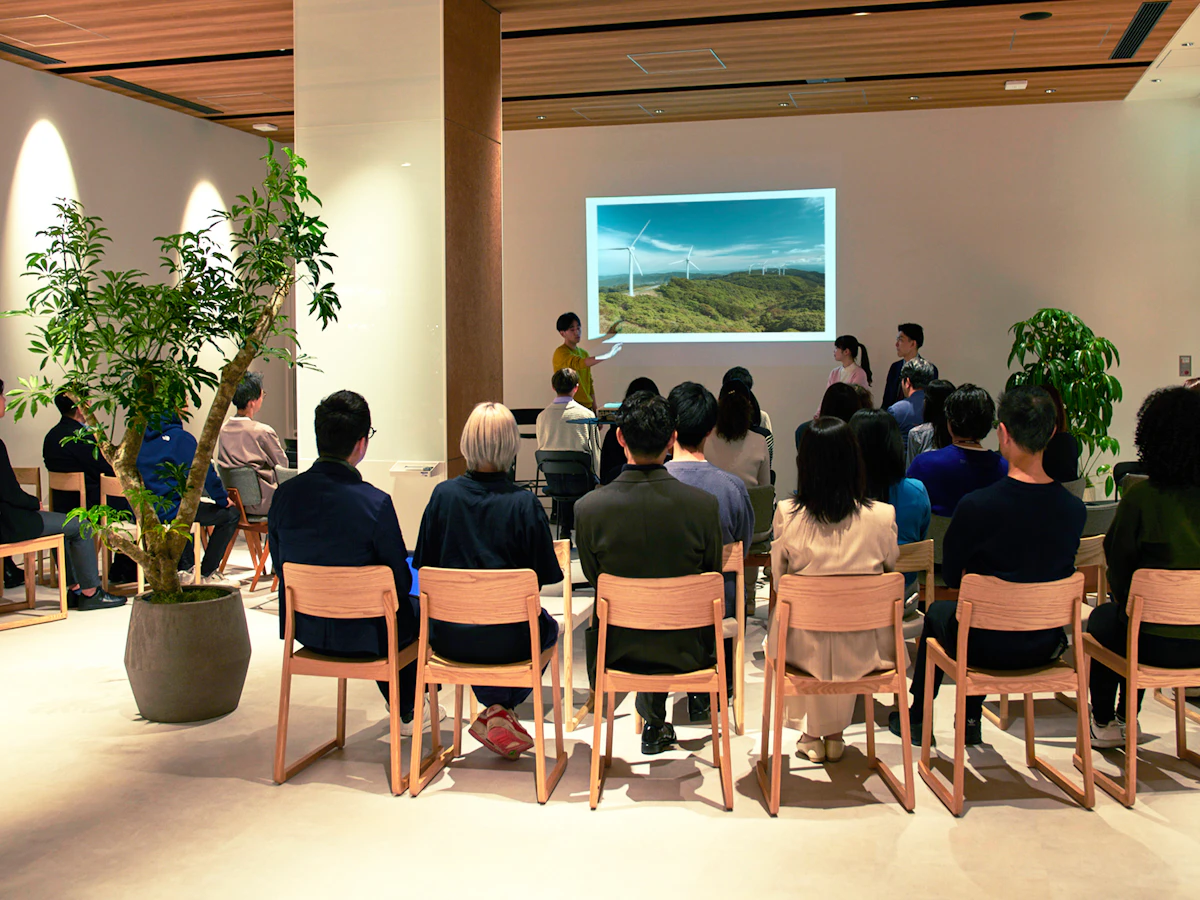
Gallery (B1F)
The Gallery, which faces the plaza in front of Toranomon Hills Station, will host events and exhibitions where members can showcase various initiatives.
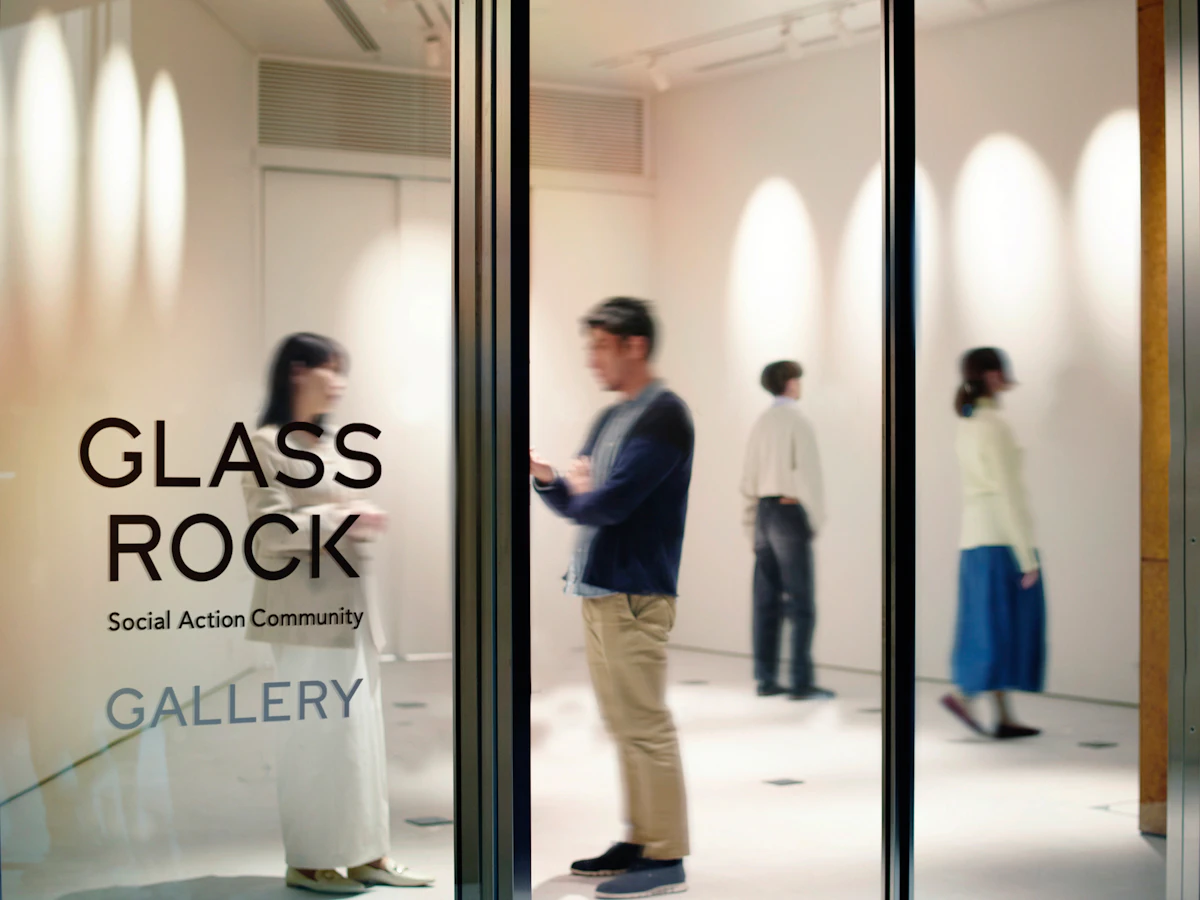
New Office Space for Connecting People Responding to Diverse Needs and New Workstyles of Global Companies
Cutting edge offices form the core of a global business center
Toranomon Hills Station Tower (A-1 district)'s office area, located on 9th, 10th, 15-44th floors (total 32 floors), offers a total rental area measuring some 107,000m² and is equipped with the very latest features for cutting edge offices. Standard floors of about 3,400m², including column-free plans with depths from core to window surface of about 18.5m, accommodate diverse workstyles and other needs of global companies.
In addition, two "magnet zones" on the east and west sides of the upper two floors of each bank, eight zones in total, are equipped with atrium spaces and staircases, connecting the upper and lower floors to promote communication and collaboration among workers, and create more dynamic and creative workplaces. The zones, designed to be highly visible from the outside of the building, convey the messages that "activities inside the building will spread to the entire city" and "the entire city can be used as a workplace."
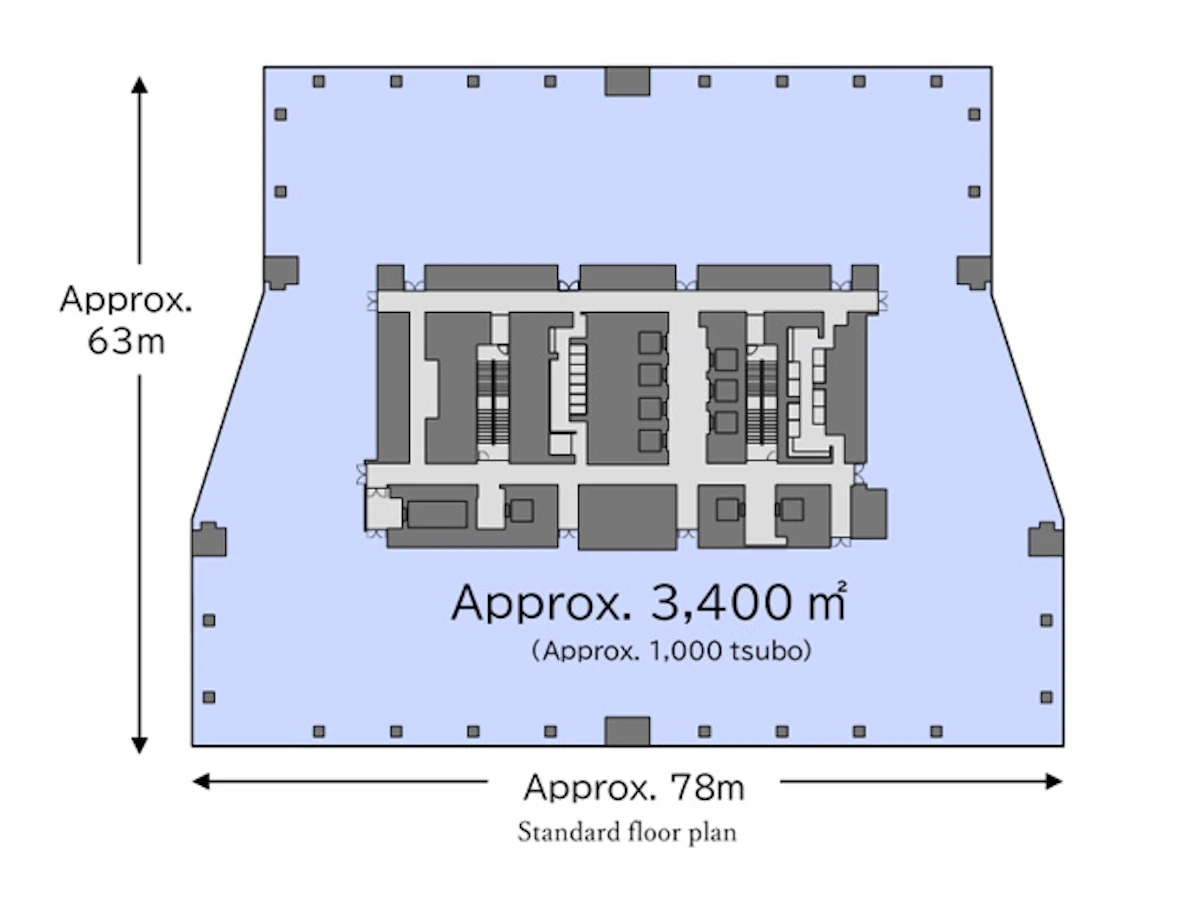
Standard floor plan
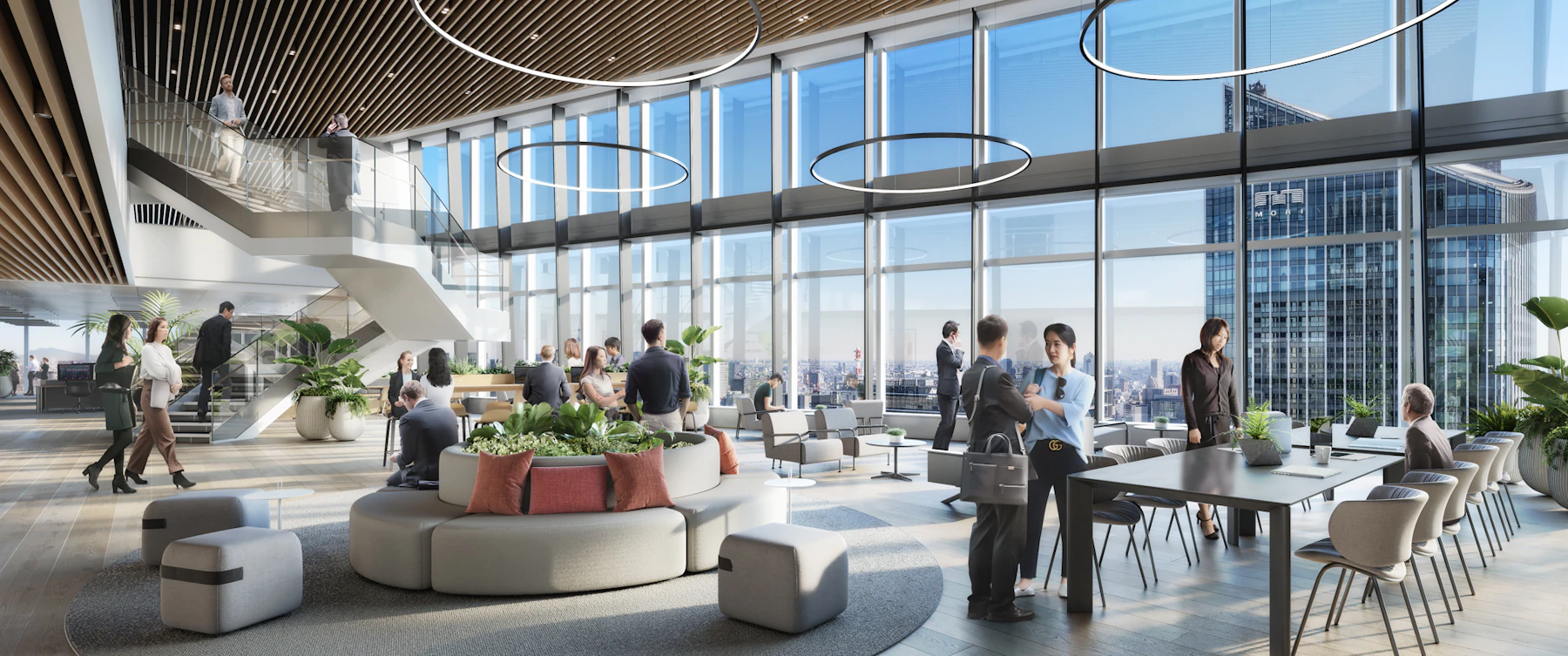
Magnet zone inside office rental area
Wide-open Sky Lobby 46m above ground with a 10-meter ceiling
Sky Lobby will be on the Station Tower's 7th floor, some 46 meters above ground overlooking Sakurada-dori Avenue. The spacious lobby encompasses some 1,200m² of area, a ceiling extending some 10 meters high and an atrium-like space for welcoming guests from all over the world. Sky Lobby is easily accessible by elevator from the station plaza on the building's second basement floor, which is integrated with Toranomon Hills Station, and from the vehicle entrance on the first floor. Direct access via shuttle elevators will be available from each floor.
Elevators to office floors are arranged in a four-bank configuration, each bank assigned to a dedicated group of floors for fast, smooth access.
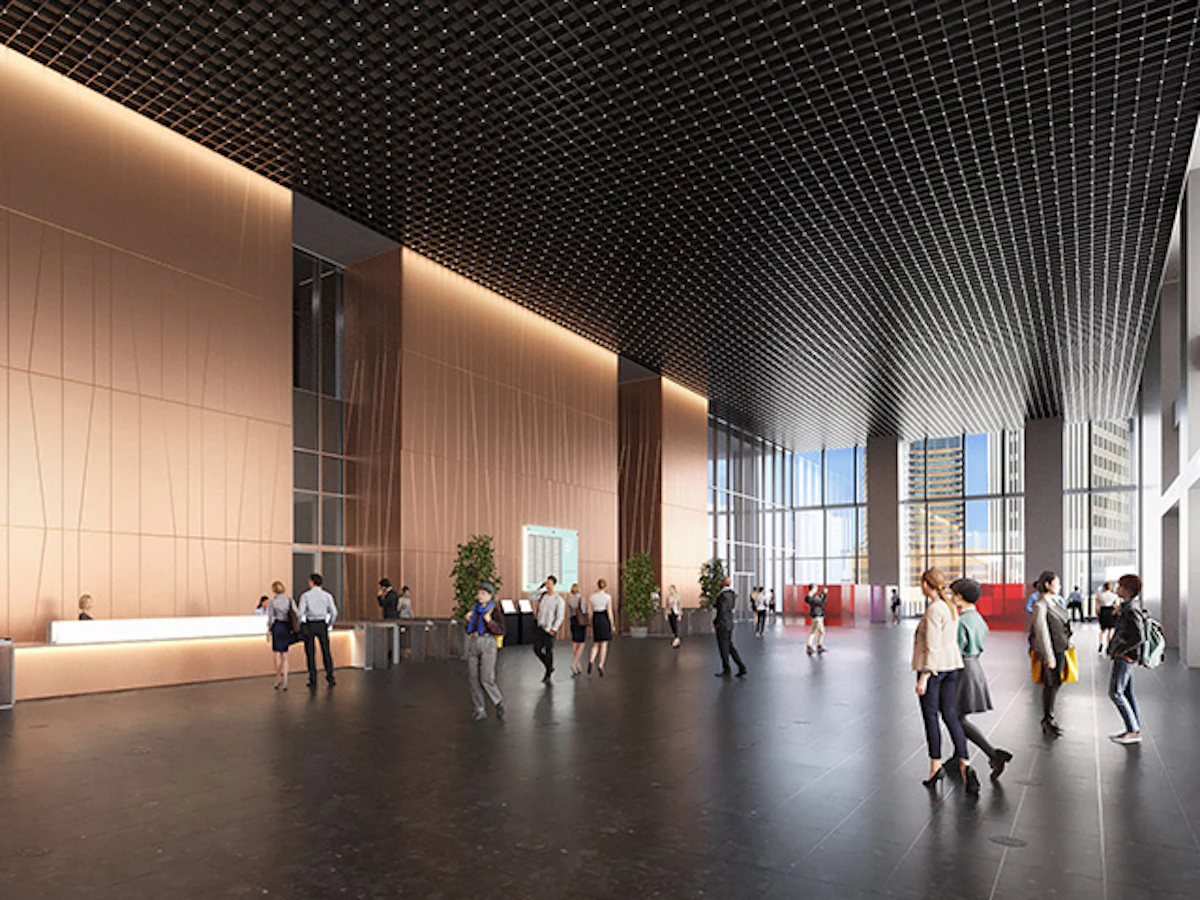
Sky Lobby
Hotel Toranomon Hills: Tokyo's First Unbound Collection by Hyatt
The 1st floor and 11th to 14th floors of Toranomon Hills Station Tower is home to the Hotel Toranomon Hills with 204 guest rooms including standard rooms measuring about 27m² to 34m². The hotel brand is "The Unbound Collection by Hyatt," which made its debut in Tokyo as a part of "Independent Collection." The brand is a curated compilation of one-of-a-kind hotels offering premium facilities, amenities and unique experiences based on top-level originality and quality.
The concept of Hotel Toranomon Hills is the hotel connected to diverse facilities and functions. It will serve as an "urban living room of Toranomon" welcoming a variety of guests with its restaurant, cafe and lounges open to the city. The hotel can be used in a variety of situations, supported by the open lounge with a view of the central city which can be used as a working space, as well as a shower booth, relaxation rooms, and meeting rooms. In addition, the maisonette-style suite room is a unique space where small-scale events can be held in a private space.
The interior design is by Space Copenhagen of Denmark, which makes its first appearance in Japan. The design is based on Scandinavian architectural style, including simple, natural materials, blended with Japanese traditional architecture, expressing a new type of luxury hotel inspired by the aesthetics and practicality of Japanese architecture.
All food and beverage experiences in the hotel's café and restaurant is supervised by Sergio Herman, one of Europe's star chefs. Herman is a native of the Netherlands and longtime Michelin-starred chef beloved by food lovers the world over and this will be his first foray into Japan. The 1st floor restaurant as well as the café & bar, deli and room service all offers modern-casual European gastronomic experiences under Herman's supervision.
Hotel Toranomon Hills in the Station Tower, together with Andaz Tokyo in the Mori Tower, will enable Toranomon Hills to further evolve as a focal point for diverse guests from around the world.
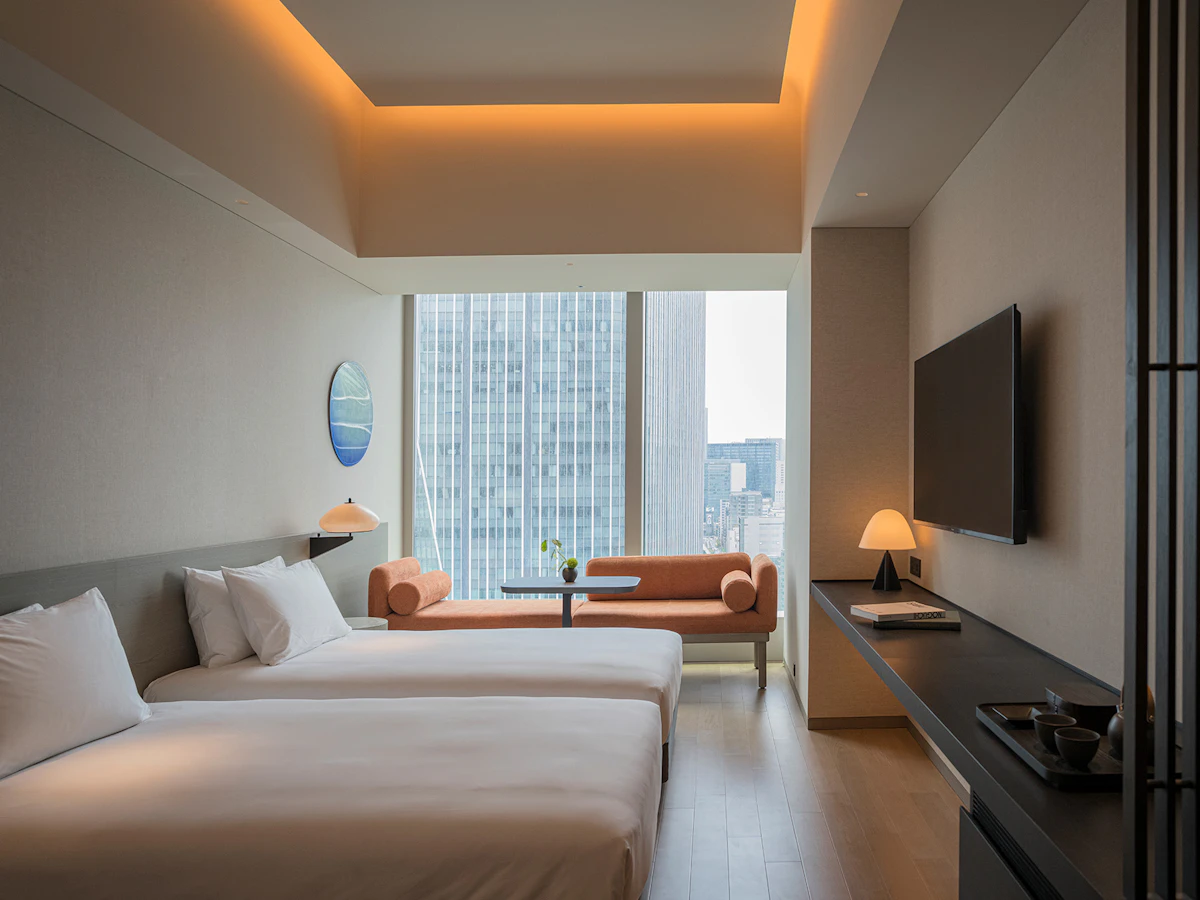
guest room
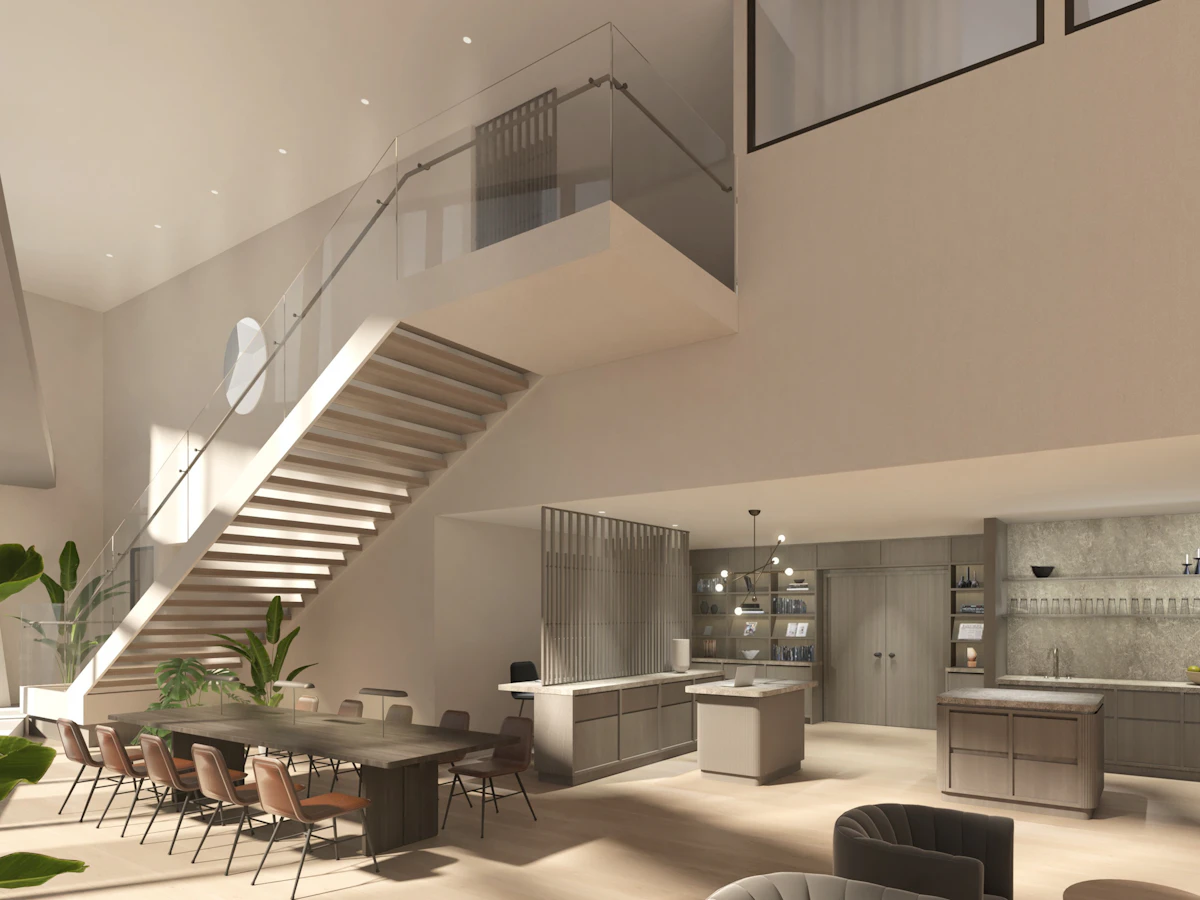
Hospitality Lounge
Retail Facilities that Support Global Players' Work and Lives
A retail space measuring about 14,400m² will occupy with some 70 stores that support the work and lives of global players including office workers and residents.
Highlights include "T-Market," a market directly connected to the "Station Atrium" plaza, the area's first large-scale boutique store selling select brands by BAYCREW'S, one of Japan's leading stores in this sector, and a wellness center of approx. 2,000m², one of the largest fitness centers and spas in central Tokyo, managed by RENAISSANCE. Furthermore, many other unique stores catering to lifestyle and beauty needs will open.
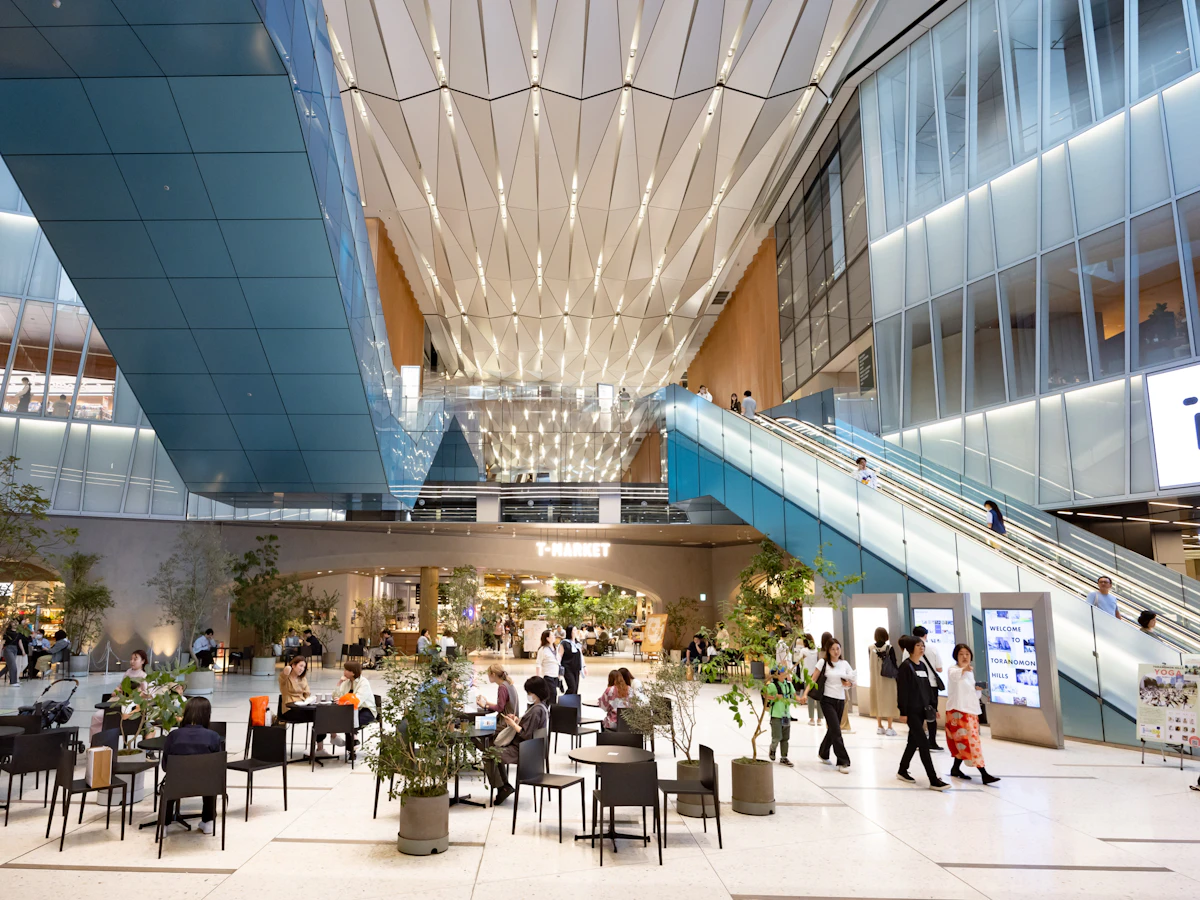
Station Atrium
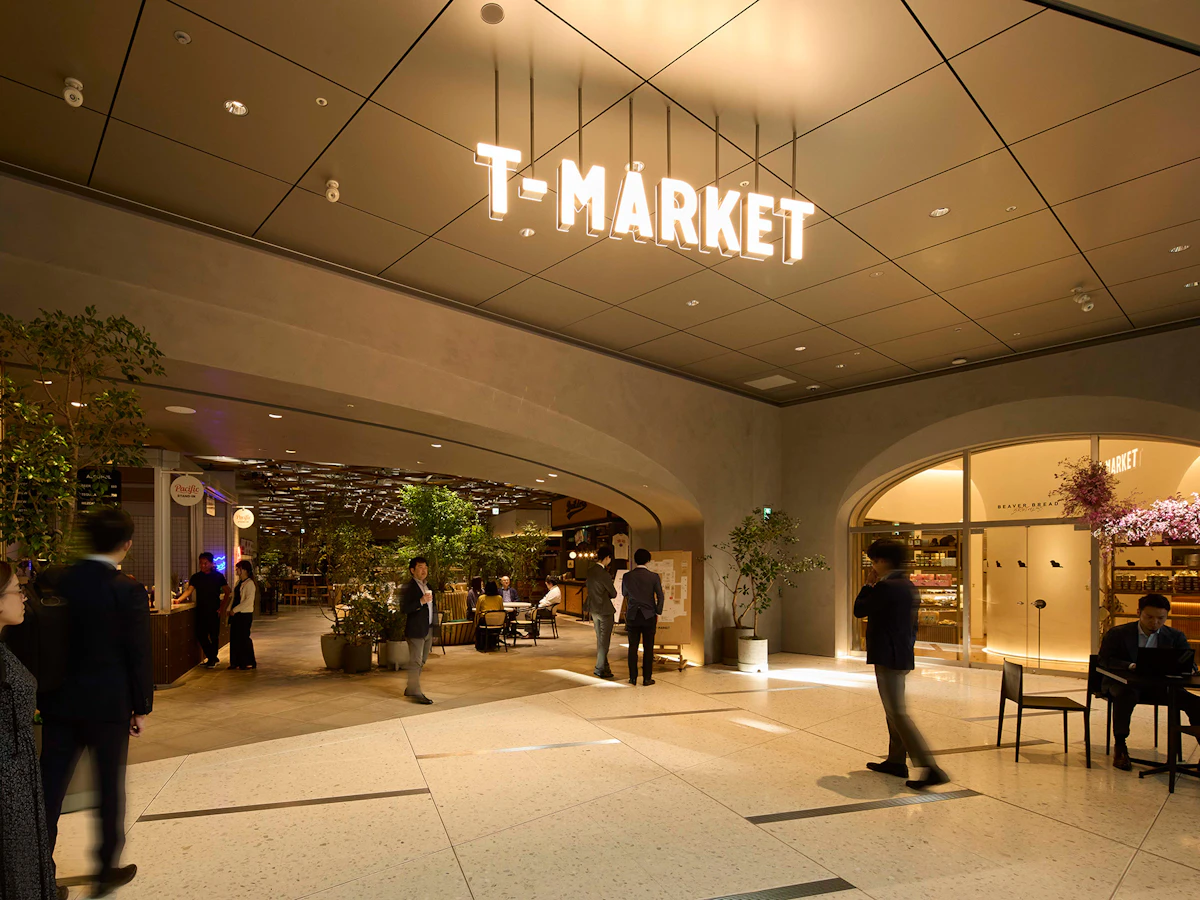
T-Market
Architects and Designers建築家・デザイナー
The cooperation of world-leading architects and designers brought together the individualit of each to create a city with a sense of unity. Various talented members from Japan and overseas participated in the city design, including Shohei Shigematsu, a representative of the international architectural design group OMA, who handled the architectural design of the Station Tower. The design embodies the Toranomon Hills' concept, new international hub and global business center, proposing how to spend time in the new city based on human activities.
Data Sheet データシート
Project Name | Toranomon 1-chome & 2-chome District Category 1 Urban Redevelopment Project | |
Location | Toranomon 1-chome and part of 2-chome, Minato-ku, Tokyo | |
Site Area | Approx. 2.2ha | |
Building Ground Area | Approx. 13,960m² | |
Building Site Area | Approx. 10,730m² | |
Total Floor Area | Approx. 253,540m² | |
| Approx. 236,640m² | |
| Approx. 8,800m² | |
| Approx. 8,100m² | |
Facilities |
| Offices, Retail Facilities, Hotel, Interactive communication facility, Parking Lots, etc. |
| Retail Facilities, Parking Lots, etc. | |
| Offices, Residences, Retail Facilities, Parking Lots, etc. | |
Floor |
| 49 floors above ground/ 4 floors underground |
| 4 floors above ground/ 3 floors underground | |
| 12 floors above ground/ 1 floor underground | |
Height |
| Approx. 266m |
| Approx. 30m | |
| Approx. 59m | |
Construction Started | November 2019 | |
Construction Completion | July 2023 | |
Structure | S (Including partly SRC, RC) | |
Architect | Mori Building Co., Ltd. | |
Constructor | Kajima Corporation, Kinden Corporation, Sanken Setsubi Kogyo Co., Ltd., and Hitachi Building Systems Co., Ltd. | |
Project Executor | Toranomon 1 chome & 2 chome Redevelopment Project committee | |
Designer | OMA and others | |

